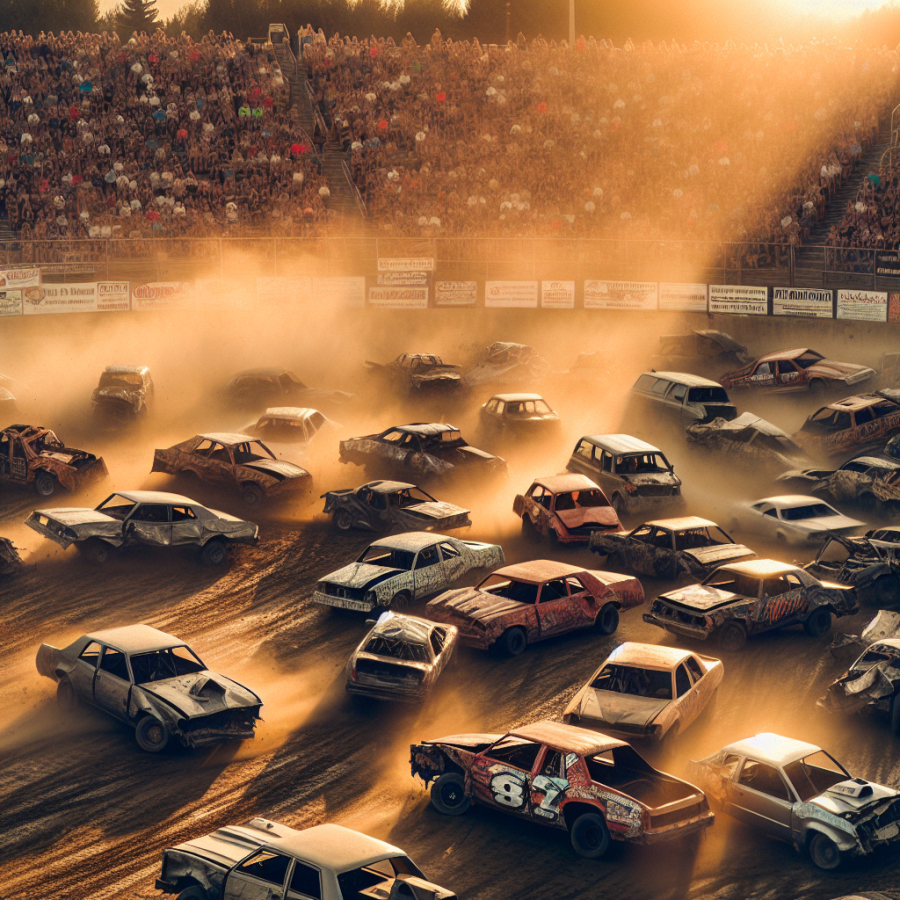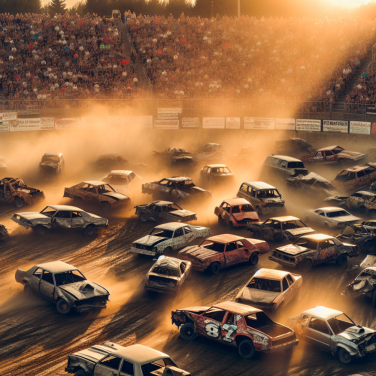Exploring the Adrenaline-Fueled Spectacle of Demolition Derby Racing
Demolition derby racing is not your average motorsport. It's less about speed and more about strategy and sheer survival. Drivers take to the arena in vehicles that have been stripped down for battle, removing glass and any other parts that could pose a hazard. What's left is a steel cage that serves as the driver's chariot as they charge into the fray.
One of the most fascinating aspects of demolition derby is the car preparation. Competitors often spend countless hours reinforcing their vehicles. They weld doors shut, add protective bars, and make modifications to keep the engines running despite the impending carnage. It's a balance of making a car tough enough to endure the hits but not so heavy that it becomes immovable.
When the derby starts, it's a cacophony of screeching metal and revving engines. The goal is simple: be the last car running. Drivers use a blend of aggressive offense and tactical defense, ramming into opponents while trying to protect their own vehicle's vital areas. There's a particular art to hitting others where it counts while avoiding damage to one's own engine or transmission.
Safety is paramount in demolition derby. Drivers are equipped with helmets, seat belts, and sometimes even neck braces. Events have strict rules about the types of hits allowed; for example, direct hits to the driver's side door are typically prohibited. This emphasis on safety helps ensure that the thrills of the sport are not marred by serious injury.
The strategy of derby racing is often overlooked by the uninitiated. Drivers must choose their hits wisely to avoid disabling their own cars. Targeting the rear end of an opponent's vehicle is a common tactic, as is waiting for others to weaken before swooping in for the decisive blow. Veterans of the sport often have an almost sixth sense for the ebb and flow of a derby, knowing just when to go on the offensive and when to lay low.
In terms of spectacle, few events match the raw energy of a demolition derby. The visual of cars crumpling and careening into one another is matched by a crowd's raucous enthusiasm. Fans cheer for the big hits and groan at the sight of a favorite contender's car sputtering to a stop. When a derby is in full swing, it's a no-holds-barred celebration of destruction and competition.
These events also foster a sense of community. Drivers often help each other with repairs and share techniques.
Read also:
AI-Powered Forecasts: Revolutionizing Crypto Sports Bets
Behind the Scenes: What Goes Into Preparing for the Ultimate Automotive Showdown
When it comes to the nail-biting excitement of demolition derbies, spectators often see only the action-packed collisions and the triumphant last vehicle standing. But the spectacle on show day is just the tip of the iceberg; there's an unseen world of preparation, strategy, and sheer hard work that goes into making a demolition derby the ultimate automotive showdown.
Months before the engines roar to life in the arena, organizers are tirelessly working behind the scenes to ensure every event is safe, spectacular, and runs smoothly. Securing a location is the first step, followed by obtaining the necessary permits and insurance to protect participants and fans alike. Safety inspectors are brought in to assess the grounds, ensuring that barriers are strong enough to protect viewers from the chaos within the derby pit.
Meanwhile, drivers are on their own intense journeys, hunting for the perfect car. Many opt for older, heavier cars which are thought to withstand more damage, though each driver has their own preference and strategy. Once they have their vehicles, there's an almost ritualistic process of stripping them down to the bare essentials to minimize fire risk and remove unnecessary weight.
Car preparation is an art in itself, as drivers reinforce key areas to ensure their vehicles can sustain repeated impacts. Radiators might be moved, doors welded shut, and engines tweaked for maximum durability. The rules of the event dictate many of these modifications; safety remains paramount, and adherence to regulations is strictly enforced.
Drivers also invest time in building a strategy, which might involve forming alliances or planning their moves during the derby. Despite the apparent chaos, there's a surprising amount of tactical play involved. They must choose where to hit opponents to inflict maximum damage without compromising their own vehicle's ability to continue the fight.
On the day of the event, hours before the gates open to the public, crews are already at the venue preparing. They set up the pit areas, inspect the track, and make last-minute adjustments to ensure everything is up to standard. Drivers and their teams are on-site too, making final checks to their vehicles and mentally preparing for the fray.
The atmosphere is electric; anticipation mixes with the smell of gasoline and the sound of tools. There's camaraderie among the competitors, but also a palpable tension as they size up their rivals and their machines.
Spectators might never see this side of the derby, but it’s this blend of detailed preparation and raw passion that makes the event more than just a smash-and-crash spectacle.




